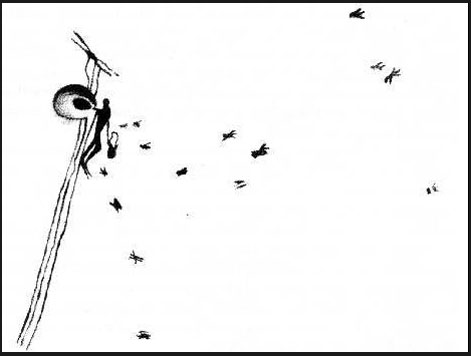OUR BEACH FOREST is home to an ancient
sia which is an earthen mound reinforced with coral rock walls.
Sia were used by the Tongans of old for a number of reasons, one of which was the ancient chiefly sport of pigeon snaring. Don't ask me how the ancient Tongans used to snare pigeons, I haven't yet researched that part although it sounds fascinating, no?
Did they use rocks? Ropes? Nets? Bows and arrows? (Did they have bows and arrows??) I wonder, what do pigeons taste like? So many unanswered questions about the past...
Pigeon snaring aside, legend has it that our
sia was a warriors' lookout pad and played a prominent role in the warrior culture emerging between the 15th and 17th centuries, a time of increasing civil war in the Tongan islands. According to legend, our
sia was built by two high ranking warriors, who were also brothers.
For several decades now, our
sia has been covered by overgrowth, and only a few of the elder generation remember the days when it was once cared for. Luckily, in 2010, Cyclone Renee uncovered this
sia - otherwise we probably would not have ever stumbled across it.. It would have remained covered by brush, unbeknownst to us. Lucky us!
One of our core projects is to restore and preserve this archaeological heritage site for future generations, and to pass on the story of the brother-warriors who once lived on this piece of land.
Here are some recent photos of the
sia's coral rock walls, which make up the 1'-2' high walls. The pics don't really do it justice, but here goes:
 |
| Western Wall |
 |
| One of the larger stones, note our goat, Lula, in the background. She loves coming on forest walks with me, she gets to munch on the vines along the way... |
 |
| This seems to be a sort of ramp on the South side |
 |
| North Slope: You can see the trees that are growing atop the sia, the roots of which push the stone wall out of joint. |
 |
| Windward (liku) view of the sea from the sia |
The interior of the squarish shaped sia is filled with shrubbery and trees. I haven't yet measured but I estimate it is approximately 40 feet by 50 feet. We will slowly start cutting the top vegetation back so that only the large trees remain on the sia. Once cleared, there will be a clear view of the ocean. We're thinking about building a signpost and a shaded picnic and camping area near this spot, to rest and relax on hot days.
Here's a couple websites of interest regarding archaeology in Ha'apai
Vaipuna, 'Uiha Island dig finds Lapita pottery shards
Foa Island - Hawaiian-like petroglyphs uncovered in 2009
COMING SOON: Interview with Kisi, a 'Uiha elder who will recount the story of the Motuha Warriors for us...














































